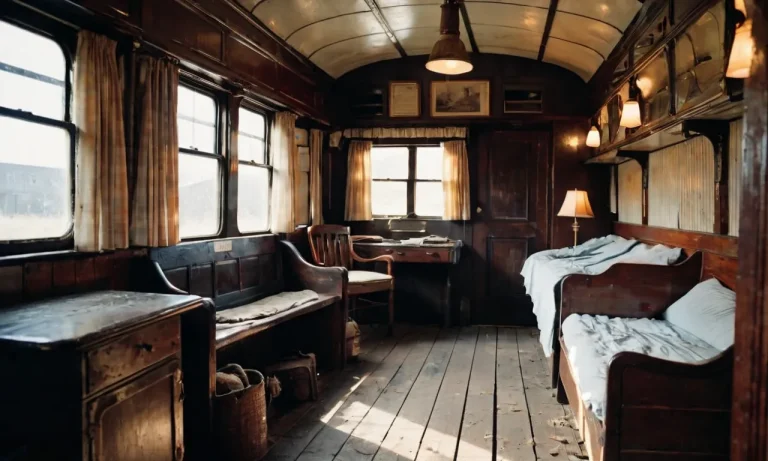Rail Safety: Staying Safe Near Train Tracks
Getting hit by a train can cause catastrophic injuries or death. This article will overview rail safety best practices, procedures if an incident occurs, and steps the rail industry is taking to prevent accidents.
If you’re short on time, the key takeaways are: stay alert near tracks, do not walk on tracks, and immediately call for help if an incident occurs.
Safety Precautions Around Train Tracks
Being Alert and Cautious
When it comes to train track safety, being alert and cautious is of utmost importance. Train tracks can be extremely dangerous if proper precautions are not taken. Always stay alert and aware of your surroundings when near train tracks.
Avoid distractions such as using your phone or wearing headphones, as these can prevent you from hearing approaching trains.
Did you know that in 2019, there were over 2,200 incidents involving pedestrians on or around train tracks in the United States? This highlights the importance of being vigilant and paying attention to your surroundings.
Additionally, it’s crucial to obey all warning signs and signals near train tracks. These signs are put in place for your safety and should never be ignored. If a warning bell or gate is activated, do not attempt to cross the tracks until it is safe to do so.
Crossing Tracks Safely
Crossing train tracks can be risky if not done correctly. To ensure your safety, follow these guidelines:
- Look both ways before crossing: Always check for approaching trains from both directions before crossing the tracks. Trains can approach from either direction, so never assume that a track is clear.
- Use designated crossings: Only cross train tracks at designated pedestrian crossings. These crossings are equipped with safety measures such as warning signs, gates, and lights to help keep pedestrians safe.
- Don’t rush: Take your time when crossing train tracks. Never attempt to beat an approaching train by rushing across the tracks. It’s better to wait for the train to pass before crossing.
Remember, it only takes a few seconds for a train to approach and pass through a crossing, so be patient and prioritize your safety.
Keeping Your Distance
One of the most crucial safety precautions around train tracks is maintaining a safe distance. Trains can have a significant amount of force and can cause serious injury or even death if they come into contact with pedestrians or vehicles.
According to the Federal Railroad Administration, the average stopping distance for a freight train traveling at 55 mph is about one mile. This emphasizes the importance of staying a safe distance away from train tracks.
When waiting for a train to pass, stand at least 15 feet away from the tracks. This will ensure that you are not at risk of being struck by the train or any debris that may be thrown up by the passing train.
Always remember that safety should be your top priority when near train tracks. By being alert, following proper crossing procedures, and keeping a safe distance, you can help prevent accidents and ensure your own well-being.
For more information on train safety, you can visit the Operation Lifesaver Canada or Operation Lifesaver USA websites.
What To Do If An Incident Occurs
Call for Emergency Help
If you witness or are involved in an incident near train tracks, the first and most important step is to call for emergency help immediately. Dial your country’s emergency number, such as 911 in the United States or 999 in the United Kingdom, to report the situation.
Stay calm and provide the operator with as much information as possible.
Provide Location and Details
When speaking with emergency services, it is crucial to provide them with accurate information about the location of the incident. Look for any landmarks or street signs nearby that can help identify the exact spot.
Be prepared to provide details about the nature of the incident, such as whether it involves a person, a vehicle, or any hazardous materials. The more precise information you can provide, the better equipped emergency responders will be to handle the situation effectively.
Do Not Approach Tracks
In the event of an incident near train tracks, it is essential to prioritize your safety and the safety of others. It is important to remember that train tracks can be hazardous, and approaching them without proper training or authorization can put you at risk.
Do not attempt to cross the tracks or get too close to the scene of the incident. Instead, keep a safe distance and wait for emergency services to arrive.
Remember, your safety is paramount. Trust the trained professionals to handle the situation and ensure that you and others stay out of harm’s way.
Industry Efforts to Improve Rail Safety
Ensuring the safety of individuals near train tracks is a top priority for the railway industry. Over the years, various initiatives and advancements have been implemented to improve rail safety. These efforts are aimed at preventing accidents and minimizing the risks associated with trespassing on or near train tracks.
Let’s take a closer look at some of the key industry efforts in this regard.
Technology to Detect Trespassers
The railway industry has been investing in advanced technology to detect and deter trespassers. This includes the use of infrared sensors, motion detectors, and closed-circuit television (CCTV) cameras along the tracks.
These systems can detect individuals or objects near the tracks and alert railway personnel or authorities to take appropriate action. By promptly identifying trespassers, these technologies help prevent accidents and ensure the safety of both pedestrians and train passengers.
Infrastructure Upgrades
Another important aspect of improving rail safety is infrastructure upgrades. Railways are constantly working on enhancing the design and layout of tracks, crossings, and platforms to minimize the risks associated with accidents.
This includes the installation of warning signs, barriers, and gates at critical points to prevent unauthorized access. Additionally, railways are also investing in the maintenance and repair of tracks and bridges to ensure their structural integrity and reduce the likelihood of accidents.
Public Education Initiatives
Public education plays a crucial role in promoting rail safety. Railways and transportation authorities are actively involved in raising awareness about the dangers of trespassing on train tracks. Through various campaigns, they educate the public on the importance of obeying warning signs, avoiding shortcuts across tracks, and using designated crossings.
These initiatives aim to instill a sense of responsibility and caution among individuals, reducing the chances of accidents and promoting a safer environment for all.
It is worth mentioning that the Federal Railroad Administration (FRA) in the United States is a reliable source of information on rail safety measures and statistics. Their website, www.fra.dot.gov, provides valuable insights into the industry efforts and regulations in place to ensure rail safety.
Conclusion
While rare, collisions with trains can be prevented by following safety precautions. Being alert near tracks, keeping your distance, and understanding how to respond if an incident occurs can save lives.








